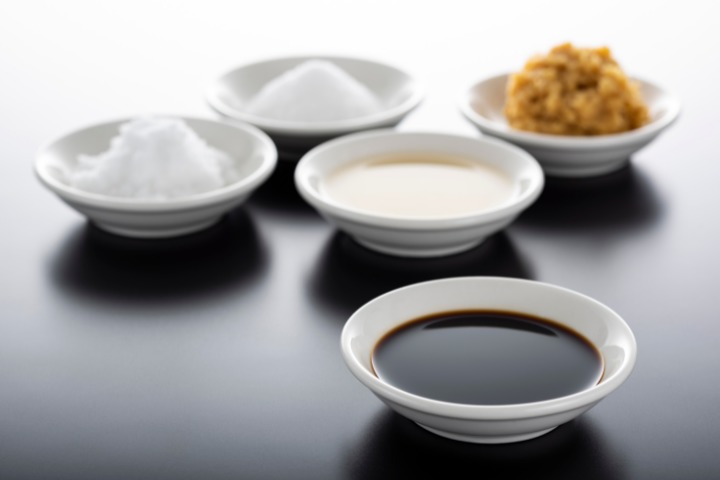You might never know that the Japanese are maximalists until you visit their kitchen! A visit to a Japanese kitchen will leave you wide-eyed and in awe of the abundance of sophisticated details. You’ll find yourself impressed by the diversity of cooking tools, eating utensils, and unique ingredients. Let’s draw back the curtains and discover the enchanting secrets behind aesthetic Japanese homemade cuisine.
Japanese Kitchen Design

Photo credit: Photo-ac.com
When visiting the kitchen of a Japanese family, you are sure to be impressed by the Japanese tendency to focus on minute details!
As the standard size of Japanese houses is small, the kitchen space is often limited. In Japanese kitchens, functionality is prioritized through efficient layouts. Minimizing the distance between the stove, sink, and fridge enhance concentration and efficient cook flow.
Moreover, Japanese kitchen design combines natural materials like wood and stone to create a warm, organic atmosphere. Lighting also plays a vital role in Japanese kitchen design, using natural light through windows to welcome sunlight, while soft and warm lighting fixtures create coziness.
Hence, those details help us feel comfortable and relaxed and encourage a sense of tranquility and connection to nature.
Kitchen Cabinets

Photo credit: Pixabay.com
Storage is very important in Japanese kitchens. They use cabinets and drawers to maximize space and sort and organize everything neatly. Therefore, you’ll find pull-out shelves, built-in racks for pots and pans, and compartments designed explicitly for different utensils.
There is a tiny world of eating utensils in Japanese cabinets. Japanese have specific bowls, plates, and various other types of utensils for different dishes.
Besides, the Japanese love colorful and aesthetic or cute utensil designs such as hashioki in carrot shapes or glass salad bowls in flower shapes.
Kitchen Tools
In Japan, you can find any tool that specifically meets your needs. For cooking tools, similar to eating utensils, Japanese homes have many tools with a single use for a specific ingredient. Regardingly, below are the top 3 tools that I find the most interesting in Japanese kitchens.
Bamboo Rolling Mat
The bamboo rolling mat or sushi mat is made from woven bamboo strips, which are used in rolling sushi neatly. We see sushi as a fancy dish that we enjoy in restaurants. However, with this tool, you can also make simple and tasty versions of sushi rolls at home.
Yukihira Nabe
I believe this tool is familiar to all of us since I’ve seen many foreign residents using it. That is because this pot’s ideal thickness helps to heat quickly and provides two spouts, which are convenient for pouring.
Miso Soup Strainer in Japanese Kitchen
Specific points of miso soup strainer in Japan are the shape and depth. To explain, its shape is typically wide and shallow, allowing for easy pouring and straining of the soup. Watching miso disperse and dissolve into the soup is indeed a simple joy in cooking.
Specific Ingredients

Photo credit: Canva.com
Japanese home foods use a variety of traditional ingredients which specify the local cuisine.
One of the typical ingredients is miso, a fermented soybean paste that adds a rich and savory taste to dishes. Also another essential ingredient is soy sauce, made from fermented soybeans and wheat, which has characteristic saltiness.
Additionally, ingredients like mirin, sweet rice wine, and rice vinegar contribute to the lightness of flavors in Japanese dishes. They offer a mix of subtle tanginess, a hint of sourness, and a delightful touch of fruity sweetness.
Japanese Kitchen – A Cozy Corner to Settle Into Japanese Daily Life
No matter how hectic and exhausting the outside world may be, we feel at home when coming back to a little corner containing our most familiarities. Japanese kitchen is one of the places where you see Japanese people naturally expressing their cultural heritage. It is within this space that the true spirit of being Japanese shines through.
Related articles:
- Soybeans – The Most Versatile, Essential Ingredient in Japanese Cooking
- Japanese Bento 101: The 5 Types of Bento Boxes
- Food in Japanese: Unique Expressions Related to Food
Soybeans – The Most Versatile, Essential Ingredient in Japanese Cooking
Featured image credits: Pixabay.com






